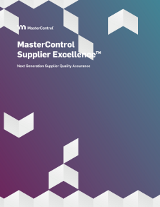
GxP Lifeline
How Effective Product Supply Management Benefits Emerging Life Sciences Companies

As someone entrenched in the world of product supply management for life sciences, I often find myself wishing for a candid conversation with the executive team. If given the chance, my message would remind them why the company exists: to provide therapeutic drugs that help patients survive or live longer with a higher quality of life than they would have otherwise. Of course, it’s important to focus on profitability, stock prices, and other stakeholder benefits, but what truly matters is delivering the right product, meeting specifications, and consistently fulfilling global patient demand.
Product supply management is an area often taken for granted in life sciences companies. Investing in product supply management is in the best interest of any life sciences company, as it has the potential to impact patient safety and efficacy.
Navigating Product Supply Management Challenges in Emerging Life Sciences (ELS) Companies
Emerging life sciences (ELS) companies face numerous challenges, especially in product supply management, as they progress from the investigational new drug (IND) stage to clinical development, commercialization, and ultimately to market launch. The journey is marked by significant headwinds, including the management of various internal and external stakeholders.
These stakeholders must align on goals, strategies, tactics, and data throughout all stages leading to a successful Prescription Drug User Fee Act (PDUFA) authorization and product launch. Coordinating these groups requires long-range planning, short-term scheduling, and the integration of established processes and technologies. Examples of how these stakeholder groups work together include:
- Clinical Product Development Teams: Typically report into executive management and guide efforts throughout a product’s life cycle.
- Drug Study Teams: Focus on the design, start-up, and operations of specific drug clinical protocols from inception through to close-out.
- Technology Transfer Processes: Required to ensure efficient, complete knowledge transfer of a manufacturing process, typically developed by the ELS sponsor to a contract development manufacturing organization (CDMO) or contract development manufacturing organization (CMO).
Benefits of a Digital Quality Management System (QMS)
An ELS company’s quality management system (QMS) is quality policies and procedures that adopt the Quality by Design (QbD) philosophy. The QMS can be a set of documents, or it can leverage systems as part of a digital quality management solution to ensure an effective application of QbD principles and practices.
Digital quality management can increase compliance and efficiencies across the product supply management spectrum and reduce delays and potential controlled response letters when dealing with chemistry, manufacturing, and controls (CMC) section filings.
Digital quality management can also help with effective planning: optimizing resource use, facilities, and equipment while generating the right product (materials, intermediates, finished products) to be delivered to the right destination(s) on time. ELS companies can often benefit from cross-functional processes/systems addressing supply and demand planning, inventory asset management, and procurement management.
The important factor to recognize here is what an incredible challenge it is to manage data and information from the early stages of development through to commercialization. The only way to keep all stakeholders aligned and focused on the critical mission is to operate with “one source of truth” regarding company and product activities. It is also important for ELS companies to keep their data strategies and data solutions as a top-of-mind consideration when making investment strategies.
Navigating the Long and Uncertain Road to FDA Approval
Navigating the path from clinical phases to U.S. Food and Drug Administration (FDA) approval is a lengthy process, often spanning more than a decade. This journey is fraught with uncertainties and varied success rates, which underscore the need for flexible strategies and mindful investment management.
| From Phase 1 to Phase 2 Completion | 2.3 | 2.3 |
|---|---|---|
| From Phase 2 to Phase 3 Completion | 3.6 | 5.9 |
| From Phase 3 to NDA/BLA Completion | 3.3 | 9.2 |
| From NDA/BLA to PDUFA Approval | 1.3 | 10.5 |
Not every product candidate will make it to commercialization. The likelihood of success starting with Phase 1 through to approval can range from 4% to 25%, depending upon the therapeutic area involved. The average success rate for all therapeutic area products is approximately 8%.
These statistics show that it is critical to manage investments mindfully and perhaps, to use an old logistics term, “just-in-time.” And I will add in a touch of “fit-for-purpose-solutions” for good measure. This is an area that my company, SVA Life Sciences, strives to deliver value consistently to our clients.
For example, when it comes to helping clients decide on when/where investments in digital quality management solutions are appropriate, we will consider our clients’ specific product volumes, business risks, and timing to ensure value will be delivered.
| From Phase 1 to PDUFA Approval | 7.9% |
|---|---|
| From Phase 2 to PDUFA Approval | 15.1% |
| From Phase 3 to PDUFA Approval | 52.4% |
| From NDA/BLA to PDUFA Approval | 90.6% |
| From NDA/BLA to PDUFA CRL*s/Withdrawals | 9.4% |
One of the primary goals of subject matter expert (SME) companies like SVA is to help clients achieve QbD standards set by the FDA. Implementing proven methodologies, fit-for-purpose solutions like digital quality management software, and processes offered by these SME companies can help avoid disastrous outcomes and delays in an already complex journey.
If product supply management operations are so important, why are their investment needs so often ignored, delayed, or de-prioritized at budget time? The answer lies partly in the lengthy timelines of our projects, which can mask underlying challenges until they become critical. Our teams are adept at managing these challenges, often going above and beyond to meet deadlines. However, this can lead to unsustainable practices in the long term.

